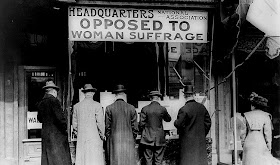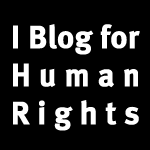All Fair Trade Organizations, supporters, consumers, advocates and activists support the Principle of Gender Equality. Unfortunately, I must admit that most of them are not familiar with the United Nations Convention on the Elimination of All Forms of Discrimination Against Women (CEDAW). To advocate for a Rights-Based Approach to Fair Trade it is vitally important that Fair Traders know what this convention is and how it works, particularly when it impacts 51% of the global population, yet women are often considered to be in the minority. For this reason, I am committing this post to understanding CEDAW.
Origins
Why was it necessary to adopt a UN Declaration on women's rights when the Universal Declaration of Human Rights (1948), and two additional conventions securing the rights the civil, political, economics, social and cultural rights already existed since 1966?
The reasons are clear once you take a look at what is missing. Firstly, there was an inability to address abuses against women, particularly when women are deprived of their rights. Not only that, there was a glaring failure to understand the difference between sex and sex-based differences contributing to inequality. Additionally, there was a distinct absence of reproductive rights and freedom for women in the conventions, thereby necessitating a separate convention to address these rights. Equally important was the need to make states accountable for positive action ensuring women's rights. Lastly, there was a need to recognize that individuals and not just state parties contribute to the gender disparities:
- Non-recognition of women’s human rights by men and women alike
- Non-recognition of abuses against women
- Non-recognition of sex, sex-based differences and gender as constituting risk and basis for vulnerability to violation
Much to my chagrin, the United States stands united with Iran as the only two nations not to ratify CEDAW. It would be great if the US were to join the rest of the civilized world in recognizing this convention.
A Look Inside CEDAW
The Guiding Principles of CEDAW are:
- Substantive Equality
- Non-Discrimination
- State Obligations
Let's begin with the principle of Non-Discrimination. CEDAW is the only UN convention to clearly define discrimination against women in the first Article, so let's break it down for simplicity:
The term “discrimination against women” shall mean
- any distinction, exclusion or restriction made on the basis of sex which has the
- effect or purpose of
- impairing or nullifying the recognition, enjoyment or exercise by women,
- irrespective of their marital status on a basis of equality of men and women,
- of human rights and fundamental freedoms in the political, economic, social, cultural, civil or any other field.
Discrimination defined in CEDAW is clear, and easy to understand. Furthermore, the convention recognizes Discrimination as:
- Direct or Indirect (Intended or Unintended) – Indirect includes a neutral law which has the effect of discriminating
- In law (de jure) or in practice (de facto)
- Present or Past/Structural, which is to say "historical discrimination"
- In all fields (civil, politcal, social, cultural, economic)
- Inter-sectional / Multiple Discrimination
By clarifying inter-sectional, CEDAW recognizes that groups of women suffer multiple discrimination based on additional grounds such as:
- Race or Ethnicity
- Religion
- Disability
- Age
- Class
- Sexuality
Approaches to Equality
A Formal Approach to Equality
This approach regards women and men as the same, and as such it treats them as the same. On the surface this may seem fair, but the effect can be detrimental. Firstly, it does not take into account the difference between biological and socially constructed differences. To understand how gender is a social construct, read the March, 2011 post on International Women's Day: What is Gender.
Secondly, the Formal Approach uses a male standard while disregarding the special needs of women. Choosing this gender-blind approach we are ignoring biological and socio-cultural differences that need to be addressed.
Thirdly, it assumes that women will have access equal to opportunities, but according to the same rules as men. This does not take into account historical inequality or socio-cultural practices. For example, if women have been inhibited from attending schools, participating in social events, utilizing the court systems, or participating in local or national politics for the past several decades, to suddenly say women have equal access to all these functions without providing a framework to raise awareness, educate, provide access, and facilitate the use of these systems will lead to a continued absence of women in these spheres.
Lastly, this approach puts a burden on women to achieve male standards. When these standards cannot be reached, the blame is inevitably placed on women and is used as justification for continued inequality.
The Protectionist Approach to Equality
A Protectionist Approach, rooted in patriarchy, recognizes the difference between men and women, but is framed in such a way that it considers "women's weakness" as a rational for different treatment. Firstly, women lose out on opportunities afforded to men due to exclusion. Secondly, it curtails women's rights and precludes their freedom of choice instead of empowering women. Lastly, it reinforces existing male and female stereotypes, and fails to lead to social change. The effect is a failure to promote the equality of women, and instead forces women into second-class citizenship.
Substantive Equality
Substantive Equality, often referred to as the Corrective Approach, recognizes differences while affirming equality between men and women. To begin it encompasses both de jure (by law) and de facto (by practice) equality. Under this convention, the state has an obligation to correct the environment that disadvantages women. This is done by requiring all state initiatives to lead to:
- Equality of opportunities
- Equality of access
- Equality of results or benefits
Now armed with a basic knowledge of the common approaches to equality, let's try examining a case study. In 2009, after completing a Master's Degree in Sustainable Development I had done an internship with the International Women's Rights Action Watch - Asia Pacific (IWRAW-AP) in Kuala Lumpur, Malaysia (http://www.iwraw-ap.org/). As an intern I was involved in CEDAW training workshops. The case study below is from IWRAW-AP, and will test your new knowledge! Remember, states have obligations under CEDAW to correct an environment, and in the court of law a court can hold a state accountable to the international treaties it signs...
As an exercise intended to provide an opportunity to utilize lessons learned, it is interesting to note how often people revert to their old perceptions.
Before going into the answers ask yourself a few questions:
- What approach did the prison authorities take? (Formal, Protectionist or Corrective)
- In the environment as it exists, whose safety is at risk?
- Only women wardens?
- Both women and men wardens?
- All prison wardens and all prisoners?
- In supporting the existing policy, did the judge change the environment?
- What changes could the court rule to make it a safe environment for all?
Substantive Equality places the onus of responsibility on the state to change an environment, regardless of whether it is a work environment or in the public streets, the state must facilitate the changes needed to ensure equality between men and women.
State Obligations
These are legally binding obligations and an existing internal law is not an excuse for non-compliance. Nor are internal divisions of power a viable defense for not drafting and implementing laws which promote gender equality. Succinctly stated, once the treaty is ratified, a State is offering itself to scrutiny on the basis of standards set forth in the Convention.
Policy of Eliminating Discrimination
Arguably, the state can set a social environment which promotes gender equality, or through inaction create an atmosphere of disregard for women's rights Above we covered Article 1 of the convention in defining discrimination. Article 2 details the obligation of the state in setting an atmosphere conducive to social change:
Article 2: Pursue by all appropriate means and without delay a policy of elimination discrimination against women and to this end undertake to:
- Embody the principle of equality in constitution and laws
- Ensure practical realization of the principle of equality
- Prohibit discrimination against women
- Legal protection of rights of women/against discrimination
- Refrain from discrimination (public actors)
- Eliminate discrimination by any person, organization or enterprise
- Modify or abolish laws, regulations, customs and practices that constitute discrimination and to modify social and cultural patterns of conduct (2f and 5a)
- Repeal discriminatory penal provisions
CEDAW holds private actors accountable through the State. As a result, the State must:
- Prevent and deter private acts of discrimination;
- investigate and negate their consequences;
- provide for remedies, redress, compensation or sanctions for the performance of such acts.
This includes violations by private actors of a pervasive or persistent character.
CEDAW Overview
Articles 1 - 5 create the general SUBSTANTIVE framework of the constitution
- Art. 1: Definition of Discrimination
- Art. 2: Measures to be Taken to Eliminate Discrimination
- Art. 3: Guarantees full development and advancement of women
- Art. 4: Special Measures
- Art. 5: Modifying Social and Cultural Patterns of Conduct
Articles 6 - 16 are specific substantive areas
PART I
- Art. 6: Trafficking and Prostitution
PART II
- Art 7: Political and Public Life
- Art. 8: Participation and the International Level
- Art. 9: Nationality
PART III
- Art. 10: Education
- Art. 11: Employment
- Art. 12: Healthcare
- Art. 13: Economic and Social Benefits
- Art. 14: Rural Women
Part IV
- Art 15: Equality Before the Law
- Art.16: Marriage and Family Life
- Articles 17 - 23 Establishment and Functioning of the CEDAW Committee
Part VI
- Articles 23 - 30 Other details relating to the administration, interpretation and implementation of the Convention
To read CEDAW in English, click here
To read CEDAW in Spanish, click here
To read CEDAW in French, click here
To read CEDAW in Arabic, click here
To read CEDAW in Chinese, click here
To read CEDAW in Russian, click here
Working in an array of South and SE Asian nations, I have always been able to request translations in printed form from the national UNIFEM offices - they have a budget for printed materials, so don't hesitate to make a request! For those who have trade partners in developing nations, I encourage you to do some online research of Women's Rights Organizations, to include Rights-Based Non-Government Organizations (NGOs) and Community-Based Organizations (CBOs) in their country and put them in touch with your trade partner. It is important that as Fair Traders we unite with the Rights-Based Organizations in their efforts to make change happen and put an end to gender inequality and social injustice.
I encourage you to contract with these organizations to provide training in Women's Rights and related issues to your producers, after all it is the responsibility of Fair Trade importers, wholesalers, buyers, and retailers to provide for the development of producer groups in order that they are empowered, self-sufficient trade partners capable of conducting international trade in ways which are beneficial to them and their community, respectful of their rights and free from any form of exploitation. Integrating a Rights-Based Approach is essential for the sustainability of Fair Trade and I know from experience that it is possible, because I have designed and conducted training programs that do exactly this!
Join Chou and I in integrating a Rights-Based Approach to Fair Trade!
Mitch Teberg, MA
International Consultant
Sustainable Development / Fair Trade/ Women's Rights and Gender
Researcher / Trainer / Consultant
Feel free to add your comments, thoughts or ideas below or catch me on facebook. For those who prefer reading black on white, here is the downloadable version of this post on pdf:
A Rights-Based Approach to Fair Trade - Understanding CEDAW




















